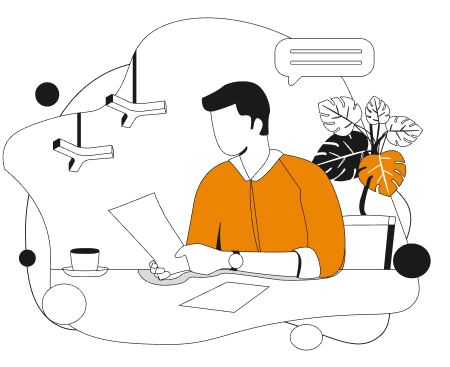
In the rapidly evolving world of artificial intelligence, leveraging tools like ChatGPT can significantly enhance business operations, streamline processes, and improve customer engagement. OpenAI’s introduction of GPTs (Generative Pre-trained Transformers) has made it possible for businesses to create custom versions of ChatGPT without writing a single line of code. This capability allows companies to tailor AI solutions to their specific needs, unlocking a myriad of possibilities.
Whether you’re looking to automate customer service, provide personalized recommendations, or integrate AI into your workflows, customizing ChatGPT for your business can be a game-changer. In this article, we’ll explore the step-by-step process of creating a custom GPT, the advantages of doing so, and some advanced customization techniques that can help you get the most out of your AI-powered chatbot.
What Are GPTs?
GPTs, or Generative Pre-trained Transformers, are a family of AI models developed by OpenAI. These models are capable of understanding and generating human-like text based on the prompts they receive. However, when we talk about “custom GPTs,” we’re referring to the specific versions of ChatGPT that users can create and modify according to their needs. These custom GPTs can browse the web, generate images, run code, and even interact with third-party APIs, making them incredibly versatile tools for businesses.
Custom GPTs allow businesses to build AI chatbots tailored to their specific requirements. Whether it’s for customer support, lead generation, or internal operations, a well-customized GPT can significantly enhance efficiency and effectiveness. The best part? You don’t need to be a coder to create one.
Why Customize ChatGPT for Your Business?
Customizing ChatGPT offers several distinct advantages, particularly for businesses looking to integrate AI into their operations. Here are some of the key benefits:
- Tailored Solutions: Custom GPTs allow businesses to create AI chatbots that align perfectly with their specific needs. Whether it’s a chatbot for customer service, marketing, or internal communication, you can design it to perform exactly as required.
- Improved Efficiency: By automating routine tasks and providing instant responses to customer inquiries, custom GPTs can significantly reduce the workload on your team, allowing them to focus on more strategic activities.
- Enhanced Customer Experience: A well-designed GPT can provide personalized experiences to your customers, improving satisfaction and loyalty. By integrating customer data, your GPT can offer recommendations, answer queries, and resolve issues quickly and accurately.
- Cost-Effective: Developing custom AI solutions in-house can be expensive and time-consuming. However, with OpenAI’s GPT builder, businesses can create powerful AI chatbots without the need for extensive development resources, making it a cost-effective solution.
- Scalability: As your business grows, so can your custom GPTs. You can easily update and scale your AI chatbots to meet the increasing demands of your operations without significant additional investment.
How to Create a Custom GPT for Your Business
Creating a custom GPT might sound complex, but OpenAI has made the process straightforward. Here’s a detailed guide on how to get started:
1. Log in to Your OpenAI Account
To begin, you need to have a ChatGPT Plus or Enterprise account. If you don’t already have one, you’ll need to sign up. Once you have the necessary account, log in to chat.openai.com.
2. Explore and Create
In the side panel, click on “Explore GPTs” to see a list of existing GPTs. This can give you some inspiration for your own chatbot. To start creating your custom GPT, click “Create.”
3. Enter Instructions
The GPT builder will display a split screen with the “Create” panel on one side and the “Preview” panel on the other. Enter your instructions in the message bar of the Create page. These instructions will guide the behavior of your GPT. For instance, if you’re building a customer service chatbot, you might instruct it to greet customers, answer FAQs, and escalate complex issues to a human agent.
4. Configure Advanced Settings
Once you’ve set up the basic instructions, click “Configure” to access advanced customization options. Here, you can:
- Change the GPT’s Name: Give your chatbot a name that reflects its purpose, such as “SupportBot” or “SalesAssistant.”
- Update Instructions: Refine the instructions to ensure your GPT behaves exactly as you want it to.
- Upload Knowledge Files: If you have specific documents, guidelines, or data that your GPT should reference, you can upload them here.
- Set Up Actions: Enable your GPT to perform specific actions, such as sending emails, scheduling appointments, or accessing external APIs.
5. Test and Refine
Use the Preview panel to interact with your GPT as you build it. This allows you to see how it responds to different inputs and make adjustments as needed. Testing is crucial to ensure that your GPT functions as intended and provides accurate and relevant responses.
6. Save and Share
Once you’re satisfied with your custom GPT, click “Create” to save it. You can then choose how to share your GPT whether it’s only accessible by invite, available to anyone with a link, or publicly listed in the GPT store.
Advanced Customization Tips
To get the most out of your custom GPT, consider these advanced customization techniques:
1. Leverage External Data Sources
By integrating your GPT with external data sources, you can provide more accurate and contextually relevant responses. For example, if you’re in the e-commerce industry, you might connect your GPT to your product database so it can provide real-time information on product availability, pricing, and shipping options.
2. Incorporate AI Actions by Zapier
With AI Actions by Zapier, you can connect your GPT to thousands of other apps, allowing it to perform tasks like updating your CRM, sending follow-up emails, or posting updates to social media. This level of integration can greatly enhance the functionality of your GPT and make it an indispensable tool for your business.
3. Regularly Update Knowledge Files
To ensure your GPT remains accurate and up-to-date, regularly update the knowledge files it references. This is particularly important for industries that are constantly evolving, such as finance, healthcare, and technology.
4. Monitor and Optimize Performance
After deploying your GPT, monitor its performance closely. Gather feedback from users to identify any issues or areas for improvement. You can then make the necessary adjustments to optimize your GPT’s performance over time.

Common Pitfalls to Avoid
While customizing ChatGPT can offer numerous benefits, there are some common pitfalls to be aware of:
- Overloading with Information: Avoid overwhelming your GPT with too many instructions or knowledge files. This can lead to slower response times and less accurate outputs.
- Ignoring Security Considerations: Always be mindful of the data you upload to your GPT. Avoid sharing sensitive or confidential information that could be at risk of unauthorized access.
- Neglecting Regular Updates: Your GPT should evolve with your business. Regularly update its instructions and knowledge files to reflect changes in your business processes, products, or services.
Conclusion
Customizing ChatGPT for your business is not just about creating a chatbot; it’s about building a tool that enhances your operations, improves customer engagement, and drives business growth. By following the steps outlined in this guide, you can create a custom GPT that is perfectly tailored to your needs.
At Asambhav Solutions, we specialize in developing custom software solutions, including advanced AI applications like ChatGPT. Whether you’re looking to build a custom GPT from scratch or need help optimizing your existing AI tools, our team of experts is here to help.
Contact Us Today to Learn More About How We Can Help You Harness the Power of AI for Your Business.
Talk soon!
Shreyan Mehta
Founder, Asambhav Solutions



